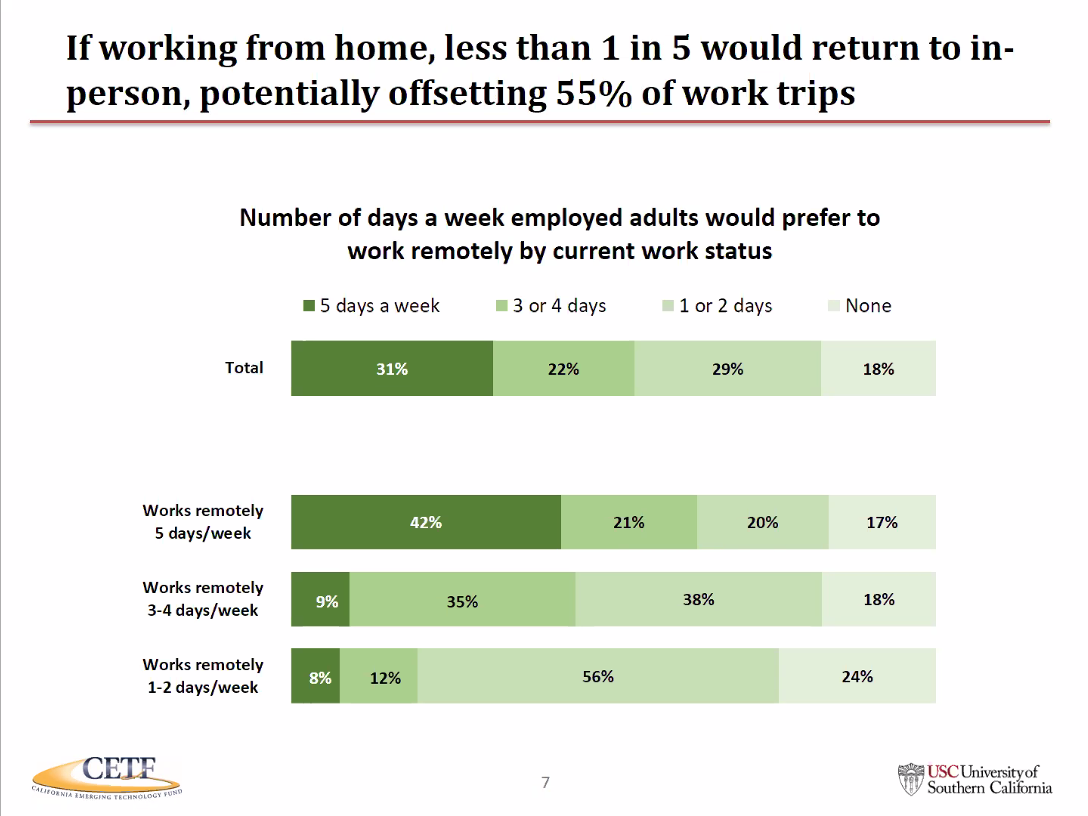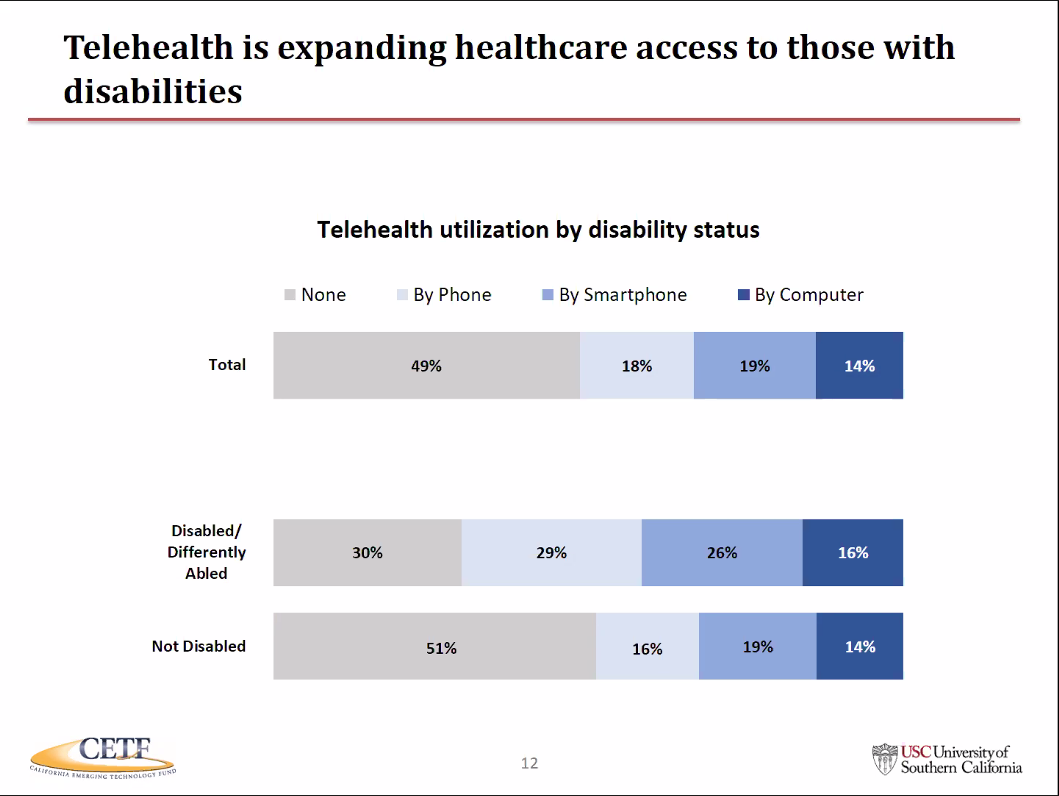Popularity Of Telework And Telehealth Presents Unique Opportunities For A Post-Pandemic World
A survey released earlier this month illustrates opportunities for remote work and care.
Benjamin Kahn

April 20, 2021—A survey conducted by the University of Southern California in conjunction with the California Emerging Technology Fund explored the popularity and availability of opportunities for telework and telehealth in California.
At an event hosted by USC and CETF Monday, experts dissected the survey released earlier this month to explain the implications it may have for the future. Hernán Galerpin is an Associate Professor of Communication at the Annenberg School for Communication, University of Southern California. He served as the lead investigator for the survey, which analyzed Californians’ attitudes towards their new schedules during the Covid-19 Pandemic.
The first statistic Galerpin noted was the extent of broadband growth in California between 2008 and 2021. According to the survey, in 2008, only 55 percent of Californians had broadband coverage. By 2021, the number had risen steeply to 91 percent, with 85 percent of Californian’s utilizing broadband through either a desktop, laptop, or tablet (with the rest connected exclusively through a smartphone).
This is significant because it helps to explain the next statistic Galerpin showed; according to his data, Galerpin stated that approximately 38 percent of employed adults worked remotely five days a week over the course of the pandemic, while 45 percent did not work remotely (17 percent worked between 1-4 days remotely).
When asked how many times they would like to telecommute to work, respondents were most likely to indicate a preference for what they had become accustomed to; those who worked from home five days a week had a 42 percent chance of preferring working from home 5 days a week; those who worked from home three to four days a week had a 35 percent chance of preferring a three to four day telecommute schedule; those who worked remotely one to two days per week had a 56 percent chance of favoring a one to two day telecommuting schedule.

The data collected also indicated that low-income and Hispanic workers were disproportionately unable to telecommute.
Overall, telecommuting five days a week was the most popular option, with 31 percent of total respondents favoring that arrangement. By comparison, only 18 percent of respondents favored a schedule without any telecommuting.
President and CEO of CETF Sunne Wright McPeak called this data “unprecedented,” and stated that broadband had the potential to serve as a “green strategy” that could limit the number of miles driven by employees, and ultimately reduce greenhouse gas emissions as well as other harmful pollutants. According to the data, as many as 55 percent of work commutes could be offset by a reconfigured telecommuting schedule.
The benefits of broadband did not stop there, however. Data also indicated that nearly 70 percent of Californians 65 years and older were able to utilize telehealth services, whether that was over the phone/smartphone or computer. Unsurprisingly, wealthier Californians were also more likely to benefit from telehealth services, with nearly 56 percent of low-income Californians going without telehealth, compared to 43 percent of “not low income” Californians.

An additional positive sign was that the overwhelming majority of disabled individuals were able to utilize telehealth services, with 70 percent of disabled respondents indicating that they were able to do so over the course of the pandemic.










Member discussion